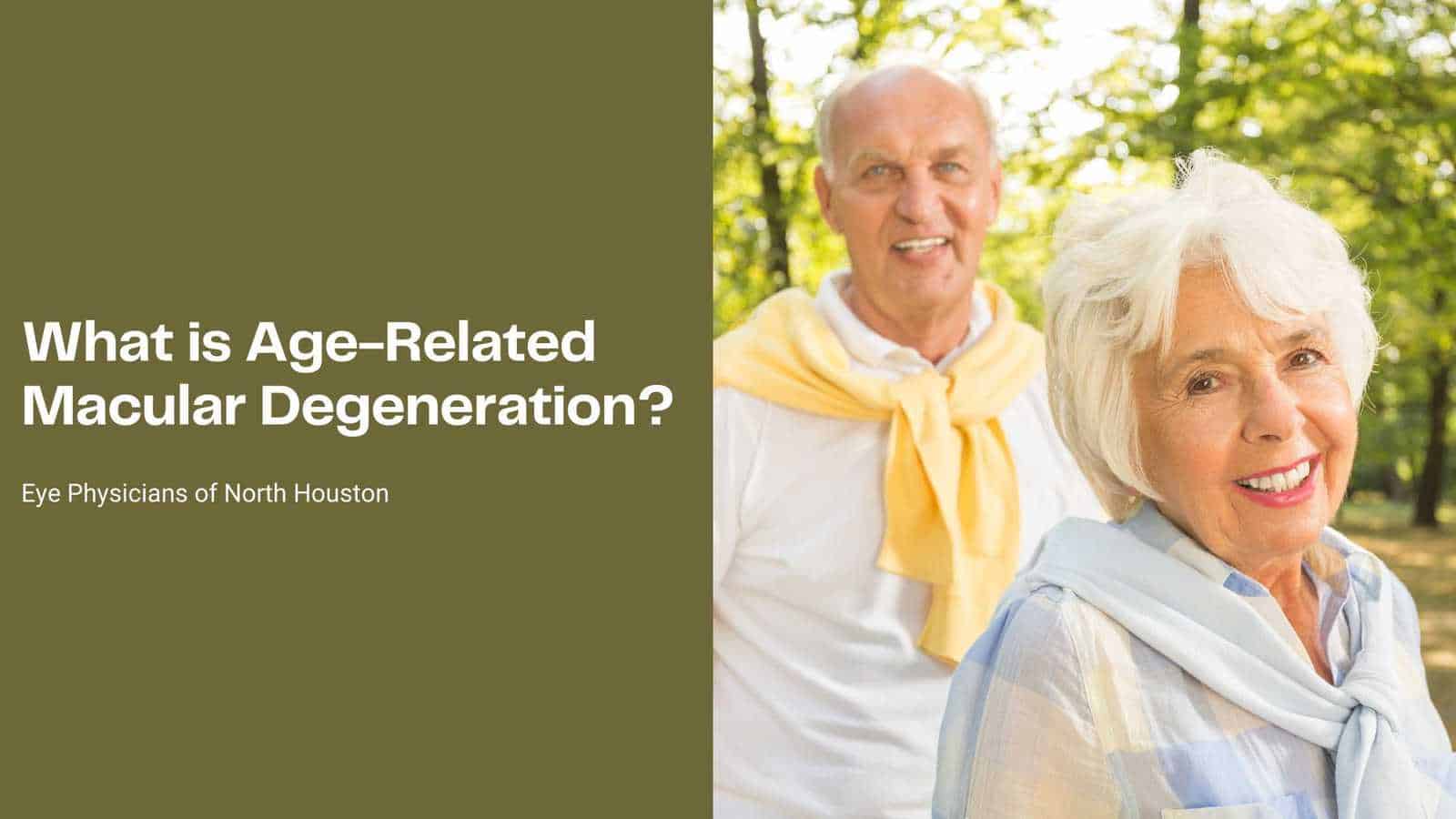Age-related macular degeneration (AMD) is one of the leading causes of vision loss in older adults. It results from a damaged macula, the retina’s central portion responsible for providing clear, sharp vision. The macula allows you to conduct daily activities such as cooking, driving, and reading with ease. It does not impact your peripheral vision. Unfortunately, as AMD progresses – typically in stages from early to late, it may become more challenging to do the things you once enjoyed.
There are two types of AMD, dry and wet, with the former being the most common.
According to Prevent Blindness, between 85 and 90 percent of all age-related macular degeneration patients are diagnosed with “dry” or non-exudative AMD, making it the most common form. Dry AMD is characterized by the abnormal collection of extracellular material, called drusen, that progressively accumulate in the deep layers of the retina. The treatment goal here is to prevent the progression of the disease by focusing on healthy lifestyle choices and taking nutritional supplements.
Approximately ten to 15 percent of ophthalmology patients are diagnosed with AMD’s “wet” or exudative form. This type, while uncommon, is considered the most destructive. That is because, in addition to an accumulation of drusen, the barriers between the retina and its blood vessels can break and leak. That can cause bleeding and scarring and, consequently, permanent vision loss. Wet AMD may be treated with intravitreal injections or surgical intervention by a board-certified ophthalmologist.
Key Symptoms and Risk Factors of AMD
The most significant risk factor for age-related macular degeneration is age. According to the National Eye Institute, AMD is a common condition, impacting people aged 55 and older. People with a family history of the disease, who are smokers, have high blood pressure (hypertension), or do not eat a balanced diet are also at risk for AMD. In its earliest stage, Early AMD, you may not experience any symptoms. That is why it is vital to schedule annual comprehensive eye exams with a board-certified ophthalmologist.
However, in the succeeding stages – intermediate and late, key symptoms may include:
- Blurry vision
- Trouble seeing in low light
- Difficulty conducting daily activities
- A noticeable difference in a color’s vibrance
- Straight lines that appear wavy or crooked
Age-Related Macular Degeneration Prevention
The single best way to prevent AMD or, if you have been diagnosed, the disease’s progression is to see your ophthalmologist regularly for comprehensive eye exams. These exams are essential for early identification of vision-impairing eye diseases, such as AMD and cataracts, and making appropriate treatment plans. Additional prevention methods include the cessation of smoking, lowering cholesterol, making healthy choices, and minimizing sun exposure by wearing 100% UVA- and UVB-blocking sunglasses.
Request an Ophthalmology Appointment Today
Using only the most advanced technologies and techniques, the board-certified ophthalmologists at Eye Physicians of North Houston provide compassionate, comprehensive patient-centered eye care in Houston. Our conveniently located ophthalmology practice, open Monday through Friday from 8:00 am to 5:00 pm, welcomes more than 15,000 patient visits each year. We invite you to schedule an appointment with one of our board-certified ophthalmologists at (281) 893-1760.
Resources:
“Age-Related Macular Degeneration.” National Eye Institute.
“Eye Diseases & Conditions: AMD (Age-Related Macular Degeneration).” Prevent Blindness.
“Learn About Age-Related Macular Degeneration.” Centers for Disease Control and Prevention.
“What is Macular Degeneration?” American Academy of Ophthalmology.
“What is Macular Degeneration?” American Macular Degeneration Foundation.

